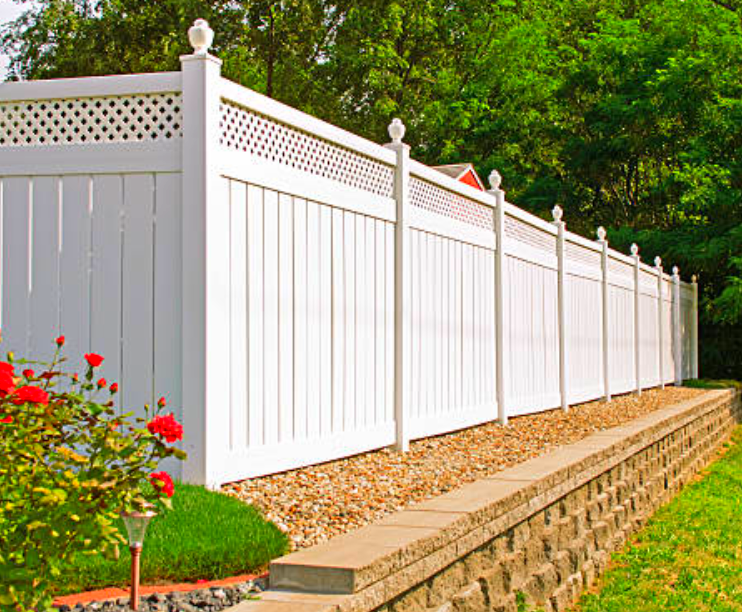Plastic fences have gained immense popularity in recent years due to their numerous advantages over traditional materials like wood and metal. These fences offer a wide range of benefits, including durability, low maintenance requirements, and aesthetic appeal. In this comprehensive guide, we will delve into the world of plastic fences, exploring their types, advantages, installation process, and maintenance tips.
Plastic Fence
Types of Plastic Fences
Plastic fences come in a variety of styles, colors, and designs, allowing homeowners to choose the perfect fence that complements their property’s aesthetics. Some of the most common types of plastic fences include:
- Vinyl Fences: Vinyl fences are the most popular type of plastic fences, known for their exceptional durability and resistance to weather elements. They are available in a wide range of styles, from traditional picket fences to modern privacy fences.
- PVC Fences: PVC fences are another durable option, made from polyvinyl chloride, a material known for its strength and resistance to chemicals and moisture. PVC fences offer a smooth, glossy finish and are available in various colors.
- Composite Fences: Composite fences are a combination of plastic and wood fibers, providing the best of both worlds. They are durable, low-maintenance, and offer a natural wood-like appearance.
- Recycled Plastic Fences: Recycled plastic fences are an eco-friendly option, made from recycled materials such as plastic bottles and bags. These fences are durable, low-maintenance, and contribute to reducing plastic waste.
Advantages of Plastic Fences
Plastic fences offer numerous advantages over traditional materials, making them a popular choice for homeowners:
- Durability: Plastic fences are highly durable and can withstand harsh weather conditions, including strong winds, rain, and snow. They are resistant to rot, decay, and insect damage, making them long-lasting.
- Low Maintenance: Plastic fences require minimal maintenance compared to wood or metal fences. They do not require painting, staining, or sealing, and can be easily cleaned with a hose or mild detergent.
- Aesthetics: Plastic fences are available in a wide range of styles, colors, and designs, allowing homeowners to choose the perfect fence that complements their property’s aesthetics. Some plastic fences even mimic the look of wood or stone, providing a natural appearance.
- Affordability: Plastic fences are generally more affordable than traditional materials like wood or metal. They also have a longer lifespan, making them a cost-effective option in the long run.
- Privacy: Plastic fences, particularly privacy fences, offer excellent privacy and security for homeowners. They can help block unwanted views, reduce noise, and deter intruders.

Installation Process
Installing a plastic fence is a relatively straightforward process that can be completed by homeowners with basic DIY skills. Here are the general steps involved in installing a plastic fence:
- Plan and Measure: Determine the desired location and size of the fence, and measure the area accurately. Mark the fence line using stakes and string.
- Dig Post Holes: Dig holes for the fence posts at the marked locations. The depth of the holes should be at least one-third the height of the fence posts.
- Install Posts: Place the fence posts in the holes and secure them with concrete or gravel. Ensure that the posts are level and plumb.
- Attach Rails: Attach horizontal rails to the fence posts using screws or nails. The rails should be spaced evenly apart, according to the desired height of the fence.
- Install Fence Panels: Attach the plastic fence panels to the rails using screws or nails. Start from the bottom and work your way up, ensuring that the panels are securely fastened.
- Add Finishing Touches: Add any desired accessories or decorations, such as post caps, finials, or latticework, to complete the look of the fence.
Maintenance Tips
Plastic fences require minimal maintenance to keep them looking their best:
- Regular Cleaning: Periodically clean the fence with a hose or mild detergent to remove dirt, grime, and mildew. Avoid using harsh chemicals or abrasive cleaners.
- Inspect and Repair: Regularly inspect the fence for any signs of damage or wear. Repair any loose or damaged panels or posts promptly to prevent further damage.
- Prevent Weeds: Keep weeds and vegetation away from the fence to prevent moisture buildup and potential damage.
Conclusion
Plastic fences offer numerous advantages over traditional materials, making them a popular choice for homeowners seeking durability, low maintenance, and aesthetic appeal. With a wide variety of styles, colors, and designs available, plastic fences can complement any property’s aesthetics. The installation process is relatively straightforward and can be completed by homeowners with basic DIY skills. With proper maintenance, plastic fences can last for decades, providing years of enjoyment and protection.

Bir yanıt yazın